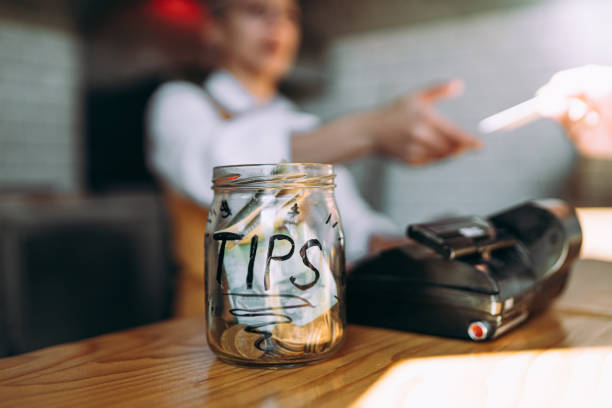Tipping is a common practice in many countries, and it serves as a way to show appreciation for good service. However, tipping etiquette can vary widely from place to place, and understanding when, whom, and how much to tip can sometimes be a bit confusing. Let’s explore tipping etiquette in various situations and help you navigate the sometimes tricky world of gratuities.
Tipping in Restaurants
1. Standard Restaurant Service
In the United States, a standard tip in a sit-down restaurant is around 15% to 20% of the total bill before tax. However, many people now opt for a 20% tip to simplify calculations.
2. Exceptional Service
If you receive exceptional service or are dining at an upscale restaurant, consider tipping more generously, around 25% or more.
3. Tipping in Other Countries
Tipping practices vary in different countries. In some European nations, service charges are already included in the bill, and additional tips are not expected. Always research the local customs before traveling.
4. Large Parties
For large parties (typically 6 or more guests), restaurants often add an automatic gratuity, which is generally around 18%. However, check your bill carefully, as some establishments may not include this.
5. Tipping on Takeout Orders
Tipping for takeout orders is generally not expected but is appreciated. You can leave a small tip, typically 10% of the total, if you received good service.
6. Bartenders
Bartenders typically receive tips for individual drinks, ranging from $1 to $2 per drink. If you’re running a tab, it’s customary to tip 15% to 20% of the total bill.
7. Tipping on Comp’d Items
If a restaurant provides complimentary items, such as a free dessert, it’s a good practice to tip on the item’s original value.
Tipping in Cafes and Coffee Shops
1. Counter Service
In cafes and coffee shops with counter service, tipping is not mandatory but appreciated. You can leave a small tip in the tip jar or round up the total.
2. Table Service
If a cafe or coffee shop offers table service, similar tipping rules to standard restaurants apply. Tipping around 15% to 20% is customary.
Tipping in Bars
1. Bartenders
Tipping bartenders is common. For every drink, leave $1 to $2 as a tip. If you run a tab, consider tipping 15% to 20% of the total bill.
2. Cocktail Servers
If you’re seated at a table in a bar, you might have a cocktail server. In this case, tipping 15% to 20% of the total bill is customary.
Tipping in Hotels
1. Hotel Housekeeping
Leaving a tip for hotel housekeeping is a kind gesture. Leaving $2 to $5 per night is the typical range.
2. Bellhops and Porters
If a bellhop or porter assists you with your luggage, tip around $2 per bag.
3. Room Service
For room service, the gratuity is usually included in the bill, so check your receipt. If not, consider a 15% to 20% tip.
4. Concierge
A concierge who assists with reservations or recommendations should be tipped $5 to $10, depending on the complexity of the request.
Tipping for Services
1. Hair Salons
In hair salons, it’s customary to tip your stylist or barber around 15% to 20% of the service cost.
2. Spas and Salons
Similar to hair salons, tipping at spas and salons is around 15% to 20% of the total bill.
3. Taxi Drivers
Taxi drivers are usually tipped around 15% of the fare. If the driver helps with bags or provides exceptional service, consider tipping more.
4. Ride-Sharing Services
Services like Uber and Lyft allow you to tip through the app. A 15% to 20% tip is standard.
5. Home Delivery Services
For food delivery or other home services, consider tipping 10% to 20% of the total bill. Keep in mind that some services include a delivery fee, which is separate from the tip.
Special Tipping Situations
1. Tipping Tour Guides
When taking guided tours, especially in a group setting, tipping the guide is customary. Depending on the length and quality of the tour, consider tipping around $5 to $10 per person.
2. Tipping in Casinos
Tipping in casinos varies. Dealers are usually tipped when you’re winning, with $5 to $10 per hour of play being common. Cocktail servers should also be tipped $1 to $2 per drink.
3. Tipping in Cabs and Rideshares
When taking a cab or a rideshare, tipping is common. Consider a 15% to 20% tip, similar to what you would do for a taxi.
4. Tipping During the Holidays
During the holiday season, consider giving a tip or a small gift to people who provide regular services, such as mail carriers, newspaper delivery personnel, or trash collectors.
Tipping When Traveling
Tipping customs can vary greatly from one country to another. Here are a few examples:
- United Kingdom: Tipping is customary but not as high as in the United States. Around 10% is considered a good tip in restaurants.
- Japan: Tipping is not common and can even be seen as rude in some situations. Exceptional service is often acknowledged with a polite thank you.
- Australia: Tipping is appreciated but not expected. Leaving small change or rounding up the bill is common.
- China: Tipping is not a common practice. In some situations, such as at high-end hotels, a service charge may already be included in the bill.
Final Thoughts on Tipping Etiquette
Tipping is a way to show appreciation for good service, but it should never be an obligation. Tipping etiquette varies around the world, and it’s important to be aware of local customs when traveling. While these guidelines provide a general idea of tipping practices, remember that the most important aspect of tipping is to express gratitude for the services you receive.

